HRIS integration is now the heartbeat of distributed employment across Africa. When your human resource information system, local payroll engine, and employer of record platform share data automatically, compliance shifts from reactive firefighting to routine hygiene. Yet Workforce Africa’s 2025 Talent Operations Survey shows that only two in five multinationals on the continent have completed HRIS integration programmes, and many still rely on weekly spreadsheet uploads. This guide explains how to create a technology and governance framework so that HRIS integration becomes seamless today and stays resilient as you expand tomorrow.

Why HRIS Integration Matters In Modern Operations
Payroll depends on accurate hire dates, job grades, and statutory identifiers that are born inside the HRIS. If those fields are typed again each month, every keystroke turns into a potential error. HRIS integration eliminates duplicate entry, strengthens audit trails, and keeps social security filings aligned with national law. It also powers analytics because managers can swap delayed spreadsheets for real-time dashboards. Companies that finished HRIS and payroll integration with Workforce Africa saved an average of twenty-two labour hours per pay cycle, tangible proof that diligent HRIS integration pays for itself within one quarter.
Common Barriers To Seamless Data Flow
Legacy on-premise applications rarely expose open interfaces, vendors quote premium licence fees for proprietary connectors, and information security teams worry about extra attack surfaces. Cultural resistance adds drag; HR leaders fear losing control while finance still trusts printed reports. Workforce Africa tackles these blockers through discovery workshops that map each hand-off, quantify hidden costs, and build a shared business case for HRIS integration across every department.
Key Principles For Successful HRIS Integration
- Single Source of Truth: Decide which system owns each field; the HRIS masters demographics, the payroll engine taxation logic and the employer of record portal employment terms.
- Data Hygiene First, archive leavers, align naming conventions, validate national ID numbers, and purge duplicates before the first test run.
- Prefer HRIS API integration: real-time calls move data in seconds and remove manual reconciliations triggered by flat files.
- Incremental Rollout: Pilot in one country, then scale horizontally; phased expansion delivers quick wins and uncovers hidden gaps early.
- Security by Design: encrypt tokens, log every transaction, and rehearse rollback procedures.
These principles power the accelerator library that Workforce Africa deploys in every client engagement, ensuring each HRIS integration milestone lands on time and within budget.
Choosing The Right Architecture For HRIS Integration
Companies usually weigh three patterns. Point-to-point wiring connects systems directly; it is quick to build but turns brittle when more applications join. A middleware hub introduces orchestration and monitoring without forcing every endpoint to be rewritten. An integration platform as a service adds drag-and-drop connectors together with governance dashboards. Workforce Africa often recommends the hub model because it balances resilience with cost, especially when global payroll integration covers diverse labour codes. Whatever model you adopt, insist that HRIS integration runs over secure APIs so you can refresh or extend workflows without touching every system.
Step-by-Step Roadmap To Integrate HRIS, Payroll, and EOR Platform
- Baseline Assessment: Catalogue every data object, its update frequency, and current transfer method, then rank each link for risk.
- Vendor Capability Audit: Confirm that suppliers expose genuine REST or GraphQL endpoints; where gaps exist, negotiate timeline commitments.
- Design Workshop: whiteboard desired flows, error-handling paths, and service-level objectives; Workforce Africa architects accelerate consensus with archetype diagrams.
- Build and Test: Configure field mappings, develop connectors, and run automated validation scripts with anonymised records.
- User Acceptance: Walk payroll and HR users through the new journey, gather feedback, and run a two-week parallel pilot.
- Go Live and Monitor: Release to production, track synchronisation success and payroll discrepancy volumes, and adjust swiftly if anomalies appear.
Follow this six-step path, and you will move from siloed files to continuous HRIS integration in less than ninety days. Workforce Africa adds contingency buffers, multilingual documentation, and an on-call support desk so that every HRIS integration milestone survives real-world conditions.

The Role Of Workforce Africa In HRIS Integration Success
Technology alone does not guarantee victory. Workforce Africa blends regional compliance expertise with certified engineers, giving clients one accountable partner who can configure HRIS API integration in Egypt, map tax codes in Kenya, and reconcile pension data in South Africa. The firm’s accelerator packs cover ninety percent of common field mappings, trimming delivery timelines by thirty days. Post-launch, a managed monitoring service watches data streams, raises alerts, and applies fixes before payroll deadlines are threatened, ensuring HRIS integration remains invisible yet dependable.
Future Trends That Will Shape HRIS Integration
Artificial intelligence already proposes mapping rules automatically, while low-code agents test endpoints every night. Edge computing will shorten latency for mobile salary approvals in bandwidth-constrained regions. Regulators are moving toward digital identity schemes that embed biometric tokens inside HRIS integration payloads. Workforce Africa is investing in sandbox environments and dedicated research teams so that clients stay ahead of these shifts. Deeper EOR platform integration is also emerging as providers expose ever-finer endpoints, allowing HRIS integration to support hour-by-hour compliance triggers.
Conclusion
HRIS integration brings more than efficiency; it frees people teams to focus on talent, equips finance with instant cost clarity, and gives employees a frictionless work life. The journey demands clean data, firm governance, and experienced guides.
With our blend of continental reach, technical depth, and cultural fluency, Workforce Africa turns HRIS integration from daunting to doable. Begin today, while manual workarounds still function, and you will build a data spine that scales effortlessly as your workforce expands across borders.






